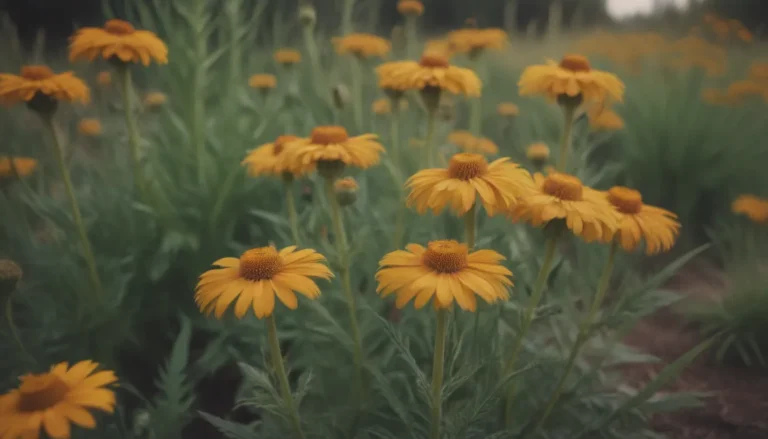Enhancing Your Tree-Adorned Garden: Plants That Thrive Under Trees

Are you a gardening enthusiast who loves the shade and beauty of mature trees but struggles to find plants that will thrive underneath them? It can be a challenging task, as trees tend to hog sunlight and moisture, making it difficult for other plants to grow. But fear not! There are perennial plant options that can coexist harmoniously with your beloved trees, creating an attractive landscape that will stand the test of time.
Siberian Bugloss
The Siberian bugloss, also known as Brunnera macrophylla, is a perennial plant that boasts heart-shaped leaves with striking white veining. What really catches the eye of many gardeners are the beautiful sky blue flowers that bloom in the spring, adding a touch of elegance to your garden. Not only does the Siberian bugloss thrive in zone 3 regions, but it also slowly forms a colony of plants that you can use to populate the landscape under your tree or transplant to other areas of your yard.
Wild Ginger
As a native plant, wild ginger (Asarum canadense) is a ground cover that requires little care to thrive. While its spring flowers may be inconspicuous, the attractive heart-shaped foliage more than makes up for it. Rural gardeners will appreciate its deer-resistant qualities, making it a great option for those looking to keep wildlife at bay. Wild ginger is best grown without neighboring plants, as it has a tendency to outcompete others in the landscape. An added bonus for wildlife enthusiasts is the pipevine swallowtail butterfly, which seeks out wild ginger plants to lay its eggs upon.
Lily of the Valley
Lily of the valley, also known as Convallaria majalis, is a tough and fragrant plant that adds a touch of magic to any garden. Its bell-shaped flowers emit a sweet spring fragrance, creating a fairy-tale-like atmosphere. This formidable ground cover can quickly fill in any bare spots in your garden, including the challenging thin and hard soil under established trees. For a unique twist, look for the rosea form of lily of the valley, which produces pale pink flowers.
Bleeding Heart
The Bleeding Heart plant, also known as Dicentra, provides textural interest in the landscape even when not in bloom. Its finely divided leaves serve as a delicate backdrop to the pendulous pink heart-shaped blooms that give the plant its name. In hot weather conditions, bleeding heart plants may enter a period of dormancy, leaving undesirable gaps in your tree garden. To fill in these gaps, consider adding a bird bath as a placeholder.
Foam Flower
Native to North America, the Foam Flower (Tiarella cordifolia) is another excellent option for the understory of your mature trees. It blooms profusely for six weeks in the spring, adding a burst of color to your garden. These plants spread by runners to form an attractive clump without becoming invasive, boasting lobed leaves with red veins. Keep in mind that foam flowers appreciate moisture, so be sure to water them with an inch of water per week if your tree canopy acts as an umbrella.
Hosta
The hosta plant is a staple in many gardens, known for its variety of sizes, colors, and leaf shapes. With breeding efforts leading to an explosion of options, you can choose from mammoth or teacup specimens, gold or blue foliage, as well as broad or narrow leaves. Hostas are long-lived plants that grow and multiply slowly over the years. While they can tolerate drought conditions, watering them regularly will help them reach their full potential.
Periwinkle
For those seeking a tough and low-maintenance plant, look no further than periwinkle (Vinca minor). While these plants can be aggressive and somewhat of a pest in mixed plantings, they excel at erosion control, making them ideal for areas under trees where the soil is prone to washing away. Periwinkle can thrive in dense shade and produces pretty blue flowers late in the spring.
Japanese Painted Fern
In a sea of green ferns, the Japanese painted fern stands out with its silver and pink fronds. This unique plant thrives in shade, with its colors most vibrant in dappled light. Regular moisture is key for the Japanese painted fern to thrive, so be sure to provide adequate water. Applying a three-inch layer of mulch will benefit both ferns and trees by suppressing weeds and conserving moisture.
Daffodil
If the soil beneath your tree is conducive to digging, consider adding spring-blooming bulbs like daffodils to add a pop of color to your garden. While daffodils require sunlight to fuel their future blooms, planting early blooming varieties under deciduous trees can satisfy this need before the trees leaf out. Make sure to plant the bulbs at least three inches deep in the fall before the ground freezes for a beautiful spring show.
By incorporating these resilient and attractive plants into your tree-adorned garden, you can create a lush and vibrant landscape that will flourish for years to come. Embrace the beauty of mature trees while enhancing the space with these carefully selected perennials. Happy gardening!





